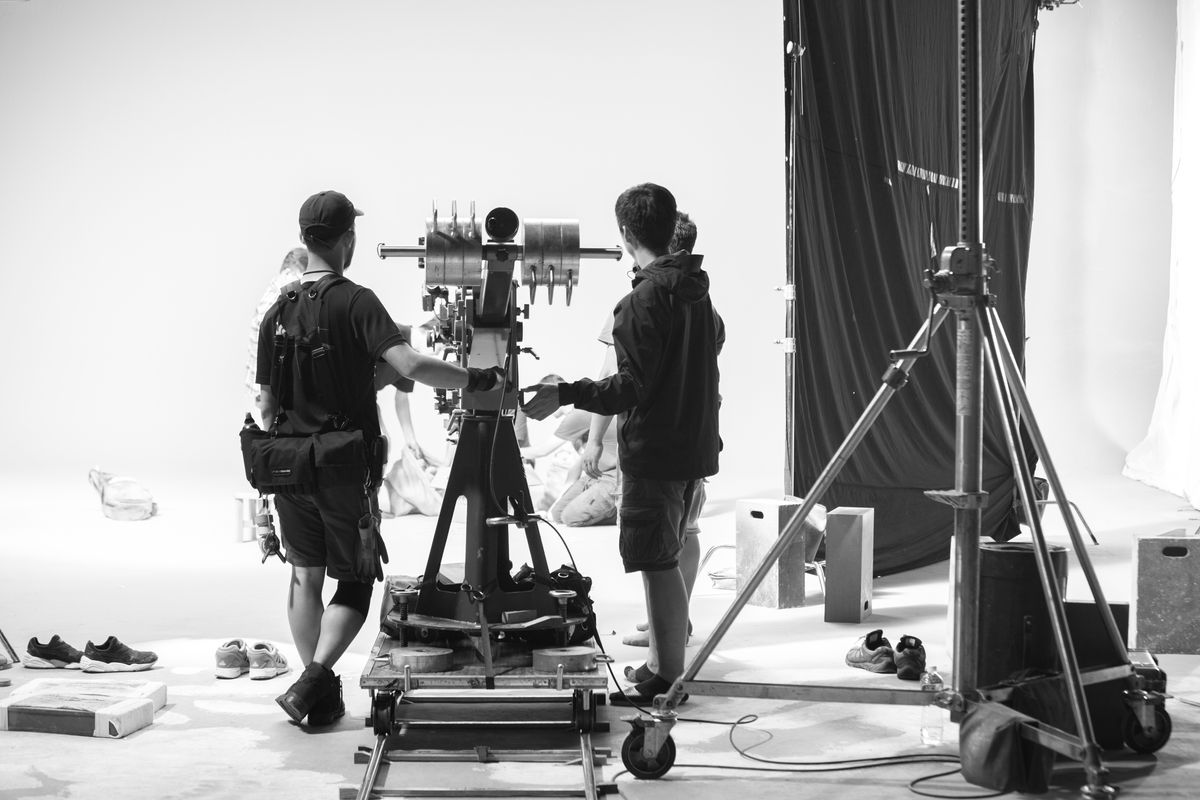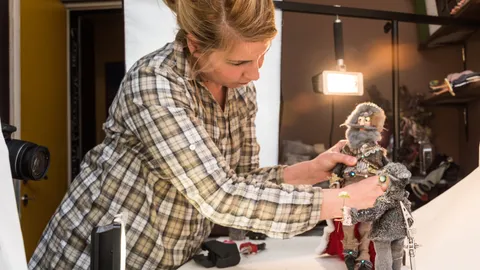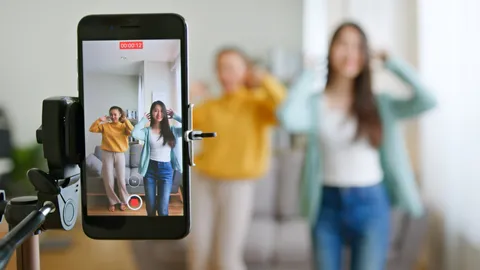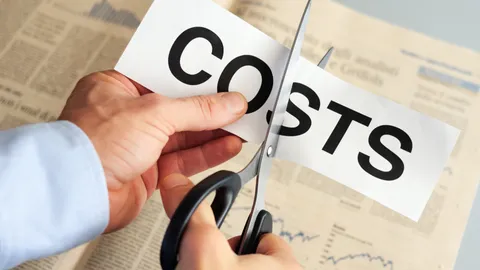Start Here
Alright, let's break this down. Video marketing is basically like setting up a campfire and telling the most engaging stories to those around you. Except, instead of a campfire, you've got the whole digital world as your stage. Cool, right? Everyone's diving into it, from big brands to the local bakery down the street. Why? Because it's authentic, it's relatable, and let's be honest, who doesn't love a good story? So, if you've ever thought, "Hey, maybe I should give this video thing a try", this is your sign. Dive in, start here, and let’s get those stories rolling.
How Do I Create a Video Marketing Strategy?
Alright, ever planned a party and wanted it to be an absolute hit? That's pretty much what creating a video marketing strategy feels like. So, let's break it down party-style:
1. Why Are We Partying? (Define Your Goal):
Before you send out those invites, you need to know what you're celebrating. Maybe it's a birthday, maybe it's just for fun. Same with your video – are you celebrating a new product launch or just spreading some brand cheer?
2. Who’s On the Guest List? (Know Your Audience):
Every great party has the right crowd. You need to figure out who's going to enjoy the most and invite them over. In marketing terms, that's your target audience. Who are they? What do they like? What sort of "party" would they enjoy?
3. Theme and Activities (Content Types):
Are you thinking of a chill movie night, a wild dance fest, or a classy wine evening? Depending on your guests (audience), you'd tailor your video content. Maybe it's a series of fun behind-the-scenes clips or an in-depth explainer video.
4. Spreading the Word (Distribution Platforms):
Just like deciding whether to send invites via snail mail, email, or a simple text, you've got to choose where to share your video. Instagram Stories might be your quick text invites, while YouTube is your detailed email.
5. Post-Party Gossip (Feedback & Refinement):
After every party, there’s always that post-event gossip about what was fun and what wasn’t. Same with your videos. Which one had folks talking? What flopped? Gather that feedback and let it guide your next "event."
What Kind of Video Should I Create?
Alright, think back to the last few parties you've been to or thrown. You remember how different they were based on the vibes, right? One might've been a laid-back BBQ, another a glitzy New Year’s bash, and yet another a cozy movie marathon. The kind of video you create is a lot like deciding the vibe for your party.
1. The BBQ – Product Videos:
Easygoing, straightforward, and everyone's favorite. Product videos showcase your brand's offerings in a way everyone can understand. Like flipping burgers and hot dogs on a grill, these videos give people a taste of what you’re all about.
2. The New Year's Bash – Brand Videos:
These are the loud, proud, and center-of-attention kind. Brand videos dive into your company's culture, values, and what sets you apart. Just like the countdown and fireworks at midnight, they leave a lasting impression.
3. Cozy Movie Marathon – Tutorials & How-To's:
Remember those long nights when everyone's snuggled up, learning the plot of a new film or re-watching classics? Tutorials and how-to videos are the educational bits, guiding your audience step-by-step, ensuring they don't miss out on any details.
4. Karaoke Night – Testimonials & Reviews:
Everyone's taking turns at the mic, sharing their favorite tunes (or in the case of video, experiences). Client testimonials and reviews give real users a chance to voice their feelings about your product or service.
5. Mystery Theme Party – Animated Explainers:
Just as everyone's intrigued by a party with a unique theme, animated explainers draw viewers in. They take complex ideas and turn them into enjoyable, easy-to-understand visuals.
What Style of Video Should I Create?
So, you've decided on the type of video (or party) you're hosting. Now, how do you want it to look and feel? It's a bit like choosing between a casual beach party, a vintage 70's disco, or a black-tie soiree. The style you pick sets the tone.
1. The Beach Bonfire – Documentary Style:
Laid-back, real, and spontaneous. Documentary-style videos capture moments as they happen, bringing an authentic and unscripted vibe. It's like sharing stories around a warm bonfire, with the waves crashing nearby.
2. 70’s Disco – Animated Style:
Vibrant, fun, and a tad quirky. Animated videos allow for creativity to run wild, much like the flashy disco lights and funky dance moves of the 70s. They're perfect when you're looking to simplify complex topics or just want to bring some lively energy.
3. Black-Tie Soiree – Cinematic Style:
Elegant, polished, and crafted with precision. Cinematic videos come with top-notch production values, captivating visuals, and a touch of drama. It's the equivalent of a posh evening where everyone's dressed to the nines and the champagne flows.
4. Masquerade Ball – Stop Motion:
Mysterious, intriguing, and visually arresting. Stop-motion videos, much like a masquerade ball, bring together the unexpected and make ordinary things seem magical. Each frame is a crafted piece of art, pieced together to tell a compelling story.
5. Retro House Party – Whiteboard & Doodle:
Fun, informal, and educational. Remember those parties where someone grabs a guitar, and suddenly it's a sing-along session? Whiteboard videos are similar – they illustrate ideas on the fly, explaining concepts in a light-hearted manner.

What Are the Three Stages of Video Production?
In the realm of video production, there's a structured approach that professionals, including us at Vimi, like to follow. It's broken down into three critical stages, each of which plays a pivotal role in creating the perfect video. Let's delve into these stages:
1. Pre-production:
This is the brainstorming and planning phase. Think of it as laying the foundation for your video.
Research & Goal Setting: Before anything else, it's essential to understand what you want to achieve with the video. Is it brand awareness? Is it a product tutorial? Knowing your goal helps in shaping the content.
Storyboarding & Scriptwriting: Here, creative ideas start taking a tangible form. A storyboard visually represents the sequences of the video, while the script outlines the narrative or dialogue.
Location Scouting & Casting: Where will you shoot the video? Do you need actors? Identifying the ideal location and selecting the right faces for your video happens here.
2. Production:
This is where all the action happens.
Setting Up: Crew members set up equipment, ensure the lighting is right, and prep the location based on the storyboard.
Filming: The director takes charge, guiding the actors and ensuring each scene is shot as envisioned. Depending on the complexity, this can span a few hours to several days.
Sound Recording: While some sounds are captured during filming, additional sound or voice-over recordings may be needed for clarity and impact.
3. Post-production:
This phase transforms raw footage into a polished video.
Editing: This is where the magic truly happens. Editors cut and arranged the footage, ensuring smooth transitions and a cohesive flow.
Visual & Sound Effects: Adding effects, background music, and sound effects elevate the video, enhancing its appeal and conveying the intended emotions.
Color Grading: This process ensures that the video has consistent colors, setting the right mood and tone.
Final Review & Export: Before releasing, the video undergoes a rigorous review, ensuring it meets the set objectives. Once approved, it's exported in the desired format.
Why You Need a Video Production Partner
Have you ever seen one of those brilliant brand commercials on TV and thought, "Wow, how did they pull that off?" Let me give you a behind-the-scenes peek.
Scaling the Great Wall... of Content:
Remember that ad where a product was showcased atop a majestic landscape, with the sun setting perfectly behind it? Well, the brand initially wanted to film it in a simple studio. But a video production partner stepped in, understanding the brand's vision, and suggested a real-life location that added depth, scale, and magic to the shot. It was their expertise that transformed a good idea into an iconic visual moment.
Getting that "Golden Hour" Shot:
There's a reason why filmmakers are obsessed with the 'golden hour'. It's a short window where the lighting is just perfect. Now, imagine a brand trying to shoot their product during this time, without expertise. They could miss the moment entirely! But with a video production partner on their side, they knew exactly when to roll cameras, capturing the product in the most flattering light.
Nailing the Perfect Drone Sequence:
A startup wanted a sweeping aerial shot of their new facility. They bought a drone, and took it out for a spin, but the footage was... let's just say, less than cinematic. Enter a video production partner. With their advanced drones and piloting skills, they captured a smooth, breathtaking bird's eye view of the facility, making it look every bit as impressive as the startup envisioned.
Crafting Authentic Customer Testimonials:
A local business wanted to showcase real customer testimonials. They just set up a camera in their store, hoping customers would pour in their love. Results? Awkward, scripted-feeling clips. But with a video production partner, they were able to set up a comfortable environment, guide customers in sharing genuine experiences, and edit it down to create sincere, impactful testimonial videos.
The point is, that while anyone can shoot a video, crafting a masterpiece requires expertise, experience, and equipment. A video production partner brings all that and more to the table. They transform visions into vibrant visuals, ensuring your brand's story is told in the most compelling way possible. Because in the end, it's not just about making a video, it's about making an impact.
How Does Video Improve My SEO?
Okay, let’s spill the beans on a little secret in the digital world using our buddy, TechGuard, as an example. They're this cool startup making next-gen wearable tech.
Seeing Is Believing
So TechGuard, they were doing well, but felt like their website was just... meh. Photos of their smartwatches, techy jargon, and reviews - it was all there, but it didn't pop, you know? So they decided, "Hey, why don't we show folks our wearable tech in action?" Boom! Video idea born.
Engagement Overdrive
They crafted this slick video, showcasing people using their wearables in real life - jogging, cooking, and even sleeping. Suddenly, visitors weren’t just glancing and bouncing. They were sticking around, watching, and engaging. And the big G (Google, that is) noticed. Longer website visits? That's Google's jam! And just like that, TechGuard was climbing the SEO ladder.
Share, Share Alike
But, the story doesn't end there. People were loving these authentic, in-action glimpses. They started sharing the videos on social media, blogs, even in chat groups. Every share was like a little high-five to TechGuard’s website SEO.
Bots & Keywords
Now, TechGuard wasn’t just making videos for the eyeballs. They were smart about it. Every video had a transcript full of juicy keywords, ensuring that even the Google bots got the message loud and clear.
The YouTube Effect
Last, but definitely not least, they played the YouTube card. They uploaded all their video content, optimized the titles and tags, and used it as a funnel to get traffic back to their main site.
And that, my friend, is how TechGuard not only showed off their epic wearables but also made waves in the digital space, all thanks to the power of video. Smart, right?
How Do I Distribute My Video?
Picture this: You've just made the most epic video. It’s got the right amount of pizzazz, charm, and info. But now comes the big question: How do you get it in front of people? Think of it like baking the world's tastiest pie. You wouldn't just keep it to yourself, right? You’d want to share slices with everyone. So, let's dish out that video pie!
Social Media – The Big Block Party
You know when you've got some big news and you can’t wait to tell your mates? That’s what social media is for videos. Facebook, Instagram, LinkedIn, Twitter - they're like your local pubs and cafes. Upload your video there, and let your network give it the love. They'll share, and tag friends, and before you know it, your video will be getting views from places and people you didn't even know about.
YouTube - The World’s Stage
Then there's YouTube, the Hollywood of videos. It's where everyone goes looking for... well, anything! So, pop your video there, and optimize the title, description, and tags. And while you're at it, make a channel. It’s like your own little TV station, where folks can binge all your content.
Embedding – The Quiet Achiever
Don't forget about your own backyard and your website. Embed that video on relevant pages. It's like putting up a billboard in a high-traffic area, except the traffic's all yours. Plus, it'll keep visitors on your site longer, which is always a good look for SEO.
Email – Oldie but Goodie
You might think, "Who even checks emails?" Trust me, they do, especially if there's something worthwhile. Share your video in newsletters or promotional emails. It's like sending a personal invite to your audience, saying, "Hey, got something cool to show you!"
Paid Promotions – Boosters Engaged
And if you're feeling like splurging a bit for extra eyes, consider sponsored posts or ads on platforms like Facebook or Instagram. A little cash can go a long way in getting your video in front of a tailored audience.
So there you have it, a few ways to dish out your amazing video pie. Remember, a video's no good if it's just collecting digital dust. Get it out there, let it fly, and watch the magic happen!
Should I Repurpose the Same Video for Every Platform?
Imagine you've just finished a corporate video that captures the essence of your brand perfectly. It’s sleek, professional, and precisely conveys your brand message. It works wonders on your website and LinkedIn, where your target demographic is professionals seeking comprehensive insights into your business operations.
One Video, Different Stories
But what about Instagram or TikTok, where the environment is more relaxed and casual? Posting a corporate, formal video there might seem like serving a four-course meal at a casual brunch. It could be seen as too intense or serious, failing to resonate with a crowd that prefers lighter, bite-sized content.
Chopping and Changing for Impact
Here’s where repurposing comes into play. It’s not about reinventing the wheel but tweaking it to fit different terrains. Take the core content of your corporate video and spice it up for different platforms. A behind-the-scenes snippet for Instagram, a quick-fire Q&A session from the original content for TikTok, or a detailed exploration of a specific aspect for YouTube.
Weave Platform-Specific Narratives
Tailoring your content enables you to weave platform-specific narratives. On LinkedIn, you might focus on expertise, accomplishments, and structured insights. On the other hand, Facebook and Instagram stories could showcase team dynamics, client testimonials, or even explore challenges faced during a project, offering a more personal and relatable angle to the same content.
SEO and Algorithm Friendly
Repurposing isn’t only about fitting into the platform but also aligning with its algorithm and SEO needs. A transcript for YouTube could boost discoverability while captions for Instagram could enhance viewer engagement, particularly as most watch without sound. Tailor your content with keywords and formats that each platform’s algorithm favors, ensuring your video doesn’t just fit but stands out.
Preserving the Core Message
And through all these tweaks and alterations, ensure the essence – your core brand message – remains unaltered. Whether it’s a short teaser on Twitter or an extended cut on YouTube, the takeaway for the viewer about your brand should be consistent.
Repurposing is like donning different attires for various occasions while retaining your unique style in each. With a dash of creativity and strategic thinking, one video can, indeed, cater to multiple platforms effectively, driving engagement, enhancing reach, and consolidating your brand presence across the digital domain. So, dissect, recreate, and most importantly, have fun crafting diverse viewer experiences from that one masterpiece video!
Which Type of Distribution is Best for Me?
1. Business Goals and Distribution:
It's essential to align your video distribution strategy with your company's goals. Are you looking to drive brand awareness or are you pushing a product? Depending on your answer, your distribution channel might differ. It's like choosing the right market for a product launch. You wouldn't try to sell heavy machinery at a local farmer's market.
2. The Digital Real Estate:
In the business world, having an online presence is paramount. So, the first place you'd think to distribute your video would be your website. Your website is your company's digital storefront, and having a video there can serve as an engaging "welcome" sign for visitors.
3. The Social Media Marketplace:
Different social platforms cater to varied demographics and interests. For example, if your video is about a new software tool, LinkedIn, a professional network, might be a better place than, say, Instagram, which is more lifestyle-oriented. Think of these platforms as different business conventions. You need to pick the right convention where your audience and potential customers frequent.
4. Know Your Audience:
To determine the best distribution channel, you have to know your audience. Are they executives who spend a lot of time on LinkedIn? Or are they younger consumers who hang out on TikTok or Instagram? In business, knowing your target audience's habits, preferences, and hangouts is half the battle.
5. Quality Over Quantity:
Instead of spreading your video thin over multiple platforms, it might be more strategic to focus on one or two platforms that align best with your business objectives and where you know your audience is. It's the age-old principle of depth over width. In business, it's often better to be really visible in a few places than barely seen in many.
In conclusion, the best video distribution channel for you is where your target audience spends their time and where your video aligns with the platform's primary use and demographic. It's about putting your video (or product) in front of the right people, in the right place, at the right time.
How Do I Know If My Video Is Successful?
1. The Bottom Line: Revenue and ROI:
Imagine you've introduced a groundbreaking product at a business expo. The success isn't just about the crowd's applause, but it's in the orders that follow. Similarly, with your video, it isn't just about views or likes; it's about the tangible return on investment (ROI). Did the video drive sales or lead to increased sign-ups? If you spent $5,000 on producing a video and it brought in an additional $20,000 in sales, that's a clear success metric.
2. Engagement Metrics Tell a Story:
In the corporate world, it's not just about the initial pitch; it's about the conversation that follows. Similarly, for your video, look beyond just the views. Dive into metrics like how long people watched your video, did they interact by commenting or sharing, and did they take any subsequent action like visiting your site or subscribing. It's like gauging interest in a business meeting. Nods and smiles are good, but questions and engagement are better.
3. Conversion is Key:
Let's say you have a storefront in the city. Having a crowd gather around your display window is good—it means your display is eye-catching. But what really matters? The number of those bystanders who actually walk in and make a purchase. Similarly, with your video, look at how many viewers took the desired action. Did they click on the link you provided? Did they sign up for your webinar? Did they make a purchase?
4. Feedback and Social Buzz:
In business, word-of-mouth is golden. After a major product launch, companies eagerly await feedback and reviews. With videos, this is similar. Are people talking about your video? Are they recommending it to others? Just like businesses pay attention to customer reviews and testimonials, the feedback and social buzz around your video can give insights into its success.
5. Compare and Contrast:
In the business realm, we often look at past performances, or we check out what competitors are doing. It helps set a benchmark. Similarly, with your video, compare its performance with past videos. Is it doing better or worse? Or if you're new to video marketing, see how your video stacks up against similar content in your industry.
To sum it up, knowing the success of your video goes beyond vanity metrics. It's about understanding the tangible impact the video has had on your business objectives. A video is not just a creative piece; when used strategically, it becomes a business asset that should yield results.
Meet Vimi
1. A Legacy of Excellence:
Picture this: you walk into the headquarters of a top-tier company. The walls echo stories of their history, triumphs, and innovations. Similarly, in Melbourne's bustling corporate landscape, Vimi stands tall, not just as another video production company but as a legacy of excellence. Over the years, Vimi has been the unseen hand behind countless successful business stories, turning visions into compelling visual narratives.
2. Not Just Videos, But Business Solutions:
Imagine hosting a board meeting. It's not about fancy slides or jargon but about solutions that drive growth. Vimi approaches video production in a similar vein. For us, it's not just about crafting visually appealing videos; it's about understanding your business needs and creating video solutions that resonate, engage, and convert. Our portfolio isn't just a collection of videos but a testament to our commitment to pushing businesses forward.
3. A Partner in Your Journey:
Think about those business partners who've been there through thick and thin, understanding every nuance of your operations, and always stepping up when needed. That's Vimi for you in the world of video production. We're not just a vendor you hire; we're partners who invest ourselves in your success. We celebrate when your brand shines and recalibrate when challenges arise.
4. The Magic of Tailored Approaches:
Every business is unique, and in the corporate world, one-size-fits-all strategies often miss the mark. Recognizing this, Vimi prides itself on its bespoke video production services. We don't have a cookie-cutter approach. Instead, we sit down with businesses, big or small, understand their DNA, and craft videos that are tailored, relevant, and impactful.
5. Ahead of the Curve:
In business, staying ahead of trends isn’t just advantageous; it's essential. Vimi, with its finger always on the pulse of the latest in video technology and trends, ensures that businesses aren't just part of the conversation but often leading it. Our expertise ensures that your videos aren't just for the present but remain relevant and influential in the future.
So, whether you're a startup looking to make a mark or an established firm aiming to redefine narratives, Vimi is the video production partner you've been searching for. Our commitment isn't just to produce videos; it's to amplify your business voice and vision.
Frequently Asked Question
1. Why are video marketing strategies vital for modern businesses?
Do you know how we all turn to videos nowadays for almost everything? Well, businesses are no different. Video marketing strategies aren't just trendy; they're crucial in our visually-driven digital age. They help businesses stand out, engage audiences, and boost online visibility. So if you're looking to make your mark online, a well-defined video strategy is your golden ticket.
2. How do I pick the right video type for my brand?
Choosing a video type is like picking an outfit for an event – it has to suit the occasion. Consider what you want to convey and who you're talking to. For product launches, demos might be your go-to, while testimonials or behind-the-scenes glimpses can build trust. It's all about matching your brand's message with the right video style.
3. How do different video styles benefit businesses?
Imagine walking into a boardroom in beachwear. Sounds off, right? Just like you'd dress for the occasion, your video should align with your business goals. Animated explainers can simplify complex concepts, while heartfelt testimonials build trust. Your chosen video style can make or break your message's impact.
4. Why are the three stages of video production essential?
In business, the process is everything. And video production? That's no different. From pre-production (all the planning and scripting) to production (the actual shooting) and post-production (editing and final touches), each stage is like a pillar that supports the final masterpiece. Miss one, and the whole thing could come tumbling down.
5. Can partnering with a video production agency help my business?
Think of it this way: Would you trust an amateur to handle a significant business deal? Probably not, right? Similarly, a video production agency brings expertise, experience, and the latest tools to the table, ensuring your brand shines in the best light.
6. How can videos boost my website's SEO?
Google loves videos as much as we do. Videos can keep visitors longer on your site, signaling to search engines that your site has great content. Plus, videos are shareable, increasing the potential for backlinks. Bottom line? More videos mean better search rankings.
7. What's the most effective way to share my business video?
There's no one-size-fits-all answer here, just like in business. Where does your audience hang out? LinkedIn might be ideal for B2B, while Instagram and Facebook are great for reaching a broader audience. Understanding your target demographic and where they spend their time can guide your distribution strategy.
8. Is it okay to use the same video on multiple platforms?
Using the same business strategy everywhere doesn't always work, and videos follow suit. While you can use the same video across platforms, tweaking it a bit for each platform's audience and format can make a world of difference.
9. How do I measure the success of my business video?
In business, numbers speak louder than words. It's the same with videos. Dive into metrics like views, engagement, shareability, and most importantly, conversion rates. If your video is driving action and adding value, you're on the right track!
10. Who's Vimi and how can they assist my business with videos?
Ever heard the saying, "Choose someone who knows their stuff"? That's Vimi for you. As a seasoned video production company, Vimi ensures that businesses don't just create videos but craft stories that resonate, engage, and drive results.





